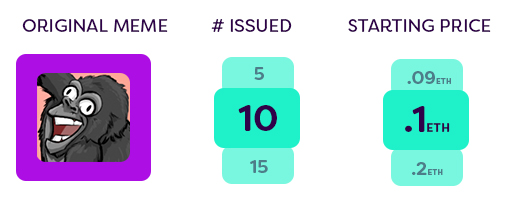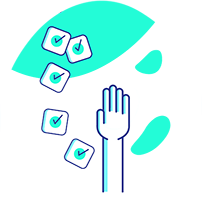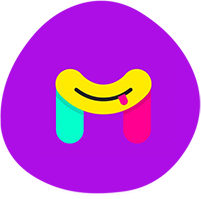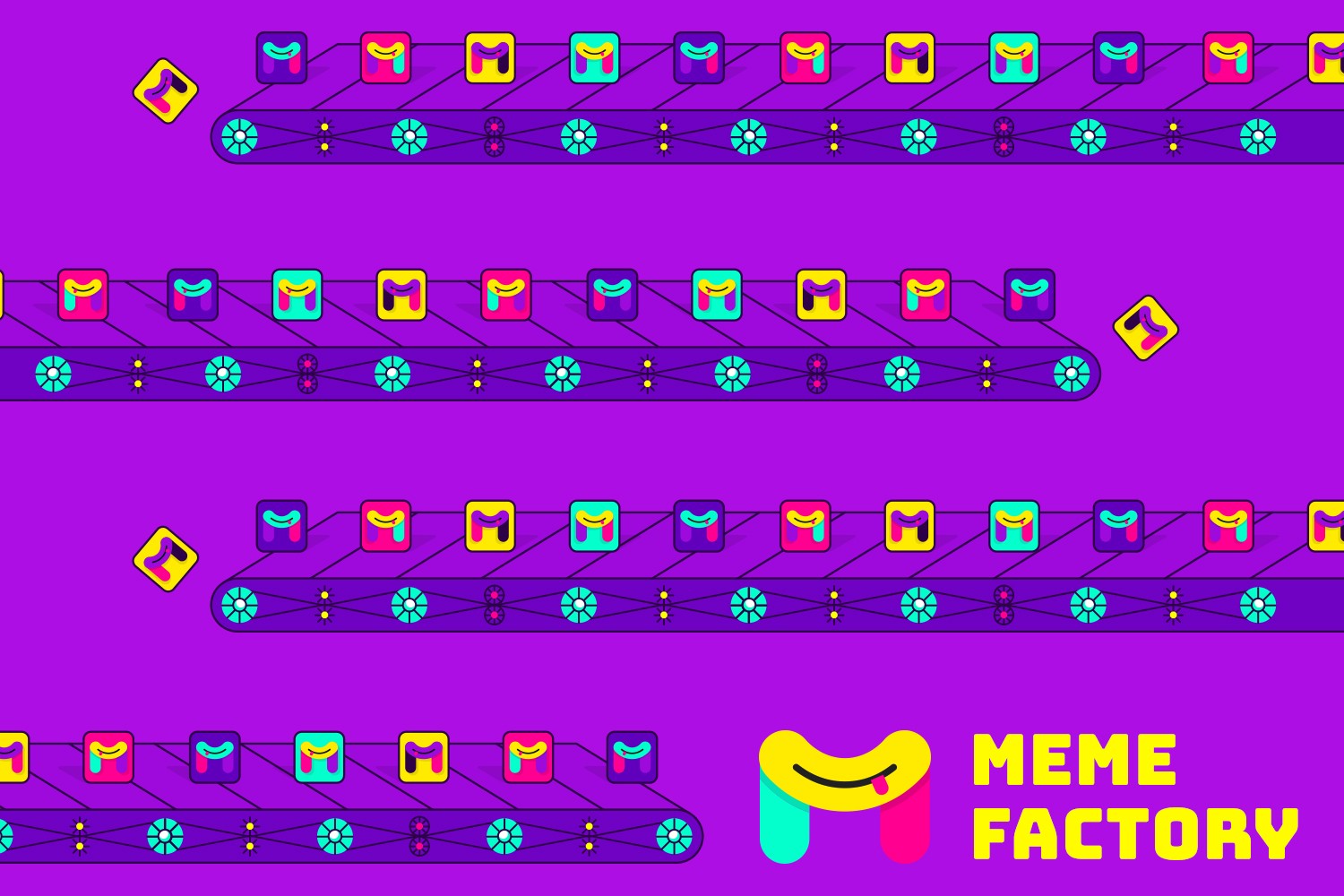
The easiest way to explain how Meme Factory works is from the perspective of each kind of user – creators, curators, and collectors. Someone using Meme Factory can be any or all of the following roles at the same time, they’re not locked into a single user type.
In addition, there are a few key components that comprise Meme Factory which we will elaborate on further:
- DANK – the ERC20 token which powers the Dank Registry
- The DANK Registry – the token incentivized voting game which controls which submissions (and subsequent details) enter the marketplace.
- The Meme Marketplace – Where Memes can be bought, sold, and traded amongst users.
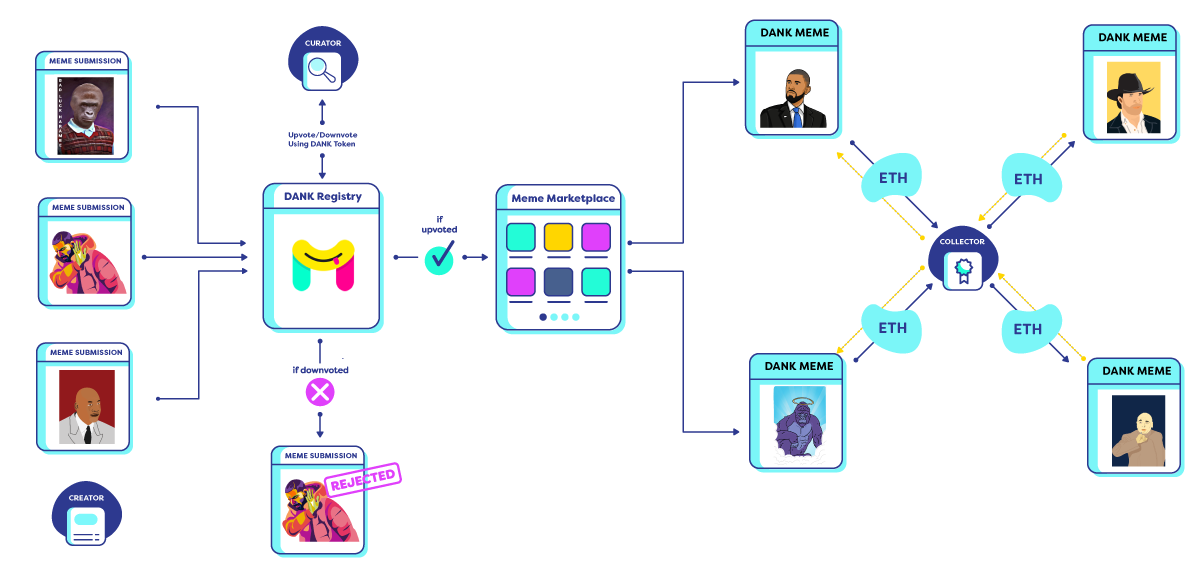
Creators
The process of introducing a new meme into Meme Factory begins with the Creators. Their job is simple – bring memes to the Dank Registry in hopes of listing them for sale. Valid submissions to the registry must include the meme itself, a starting price (in ETH) for the auction, the total supply of memes issued for sale, along with a fixed amount of DANK to deposit the meme into the registry for consideration.
By requiring this deposit, low-quality submissions and spam are easily avoided. The goal of Meme Factory is to create a marketplace with new and original memes from a bevy of creators, artists, and enthusiasts. Creators with genuinely dank memes are incentivized to risk DANK deposits in return for the opportunity to sell the newly issued memes for ETH.
Their success is predicated by a combination of the number of memes they sell, and the total amount they sell them for. Perhaps even more intriguing, is that the memes are probably rare digital assets – meaning the origin of the meme (if original) can be unequivocally proven and attributed to its creator. This leaves no room for doubt in proving who the original creator is, and when the meme was first registered – a problem that exists in meme culture today.
Recapping The Process:
- Step 1 – Create an original meme along with an auction starting price (in ETH), the total supply of memes to be issued for sale.
- Step 2 – Submit the meme into The DANK Registry (using DANK token) for consideration into The Meme Marketplace.
Curators
After the memes have been created and submitted, next comes the role of the curators. Think of Curators as the gatekeepers of the marketplace. Curators run the DANK Registry and can be split into two subcategories: challengers and voters. A challenger’s job is to find recent submissions from creators that are disagreeable for some reason (meme isn’t funny, title or tags are inappropriate, meme art is not original, etc.). Why are they important? If the marketplace is filled with duplicate, unoriginal, or frankly not DANK memes then the entire marketplace loses credibility. As a result, the motivation for inclusion into the marketplace would not exist.
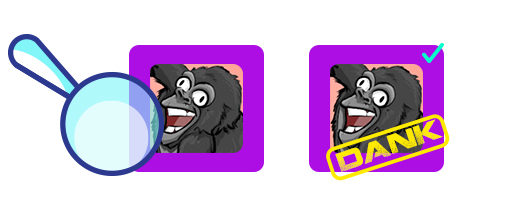
Once a meme is submitted into the Dank Registry, the Curator can then initiate a challenge to any submission’s inclusion in the registry by depositing an equivalent fixed amount of DANK as the creator. This places their DANK at risk.
When a challenge is initiated, a voting period begins. This is where the voters come in. Using their DANK tokens, voters can privately signal their DANK balance either in favor of or against the challenge. At the end of the voting period, all votes are made public and voters receive their DANK in return.
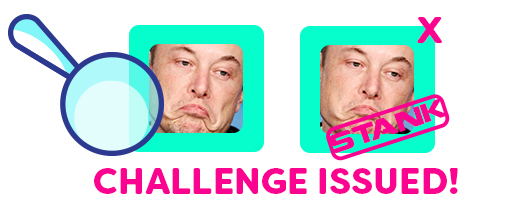
If the challenge fails, the meme remains in the registry and moves on to the meme marketplace for sale. Additionally, the challenger’s DANK deposit is dispensed as a reward to winning voters. Vice versa, if the challenge succeeds, the meme is rejected from the registry, and the creator’s DANK is forfeited as a reward to both the challenger and winning voters.
Using our own model of a Token Curated Registry, challengers are incentivized to make only prudent challenges, else they risk their initial deposit by needlessly challenging an obviously popular meme or spamming challenges across all new submissions. Voters risk nothing and are incentivized to vote as often as possible and only in their best interest – which means voting the way they think will be the most popular with others. These incentive alignments together are what produce the “curation” powers of Meme Factory. Popular content churns to the top.
Recapping The Process:
- Step 3 – Curators review meme submissions into the Dank Registry. If unchallenged, submission enters the registry and steps 4 & 5 are skipped.
- Step 4 – If the submission is challenged, the deposit of DANK is matched and the challenge period is initiated.
- Step 5 – Curators vote on inclusion into the registry. Depending on the result, DANK deposit (either submitter or challenger) is dispensed as a reward to winning voters.
Collectors
When a meme has secured a spot in the registry (either successfully exiting a challenge, or lasting the entire challenge period unchallenged) the meme is listed for sale. Using the initial price and total supply provided by the creator, the Meme is offered for sale and begins decaying down to a lower and lower price over time, until either supply runs out or the offering ends.
So who will buy the meme? This is where the collectors are introduced into the network.
During this time, any collector visiting the site, even someone who has never owned DANK, can purchase a meme using ETH. These memes are tradable and resellable on a secondary market provided on Meme Factory (think cryptokitties).
For any given meme that makes it through the Dank registry, there will only ever be a finite number issued. These provably rare memes will exist indefinitely on the blockchain and can be accessed via smart contract even if Meme Factory disappeared altogether. This gives as strong an incentive to collect as any.
Recapping The Process:
- Step 6 – Accepted memes are offered for sale until the supply is exhausted or the offering ends.
- Step 7 – Over time, memes can be resold and redistributed on an open marketplace.


